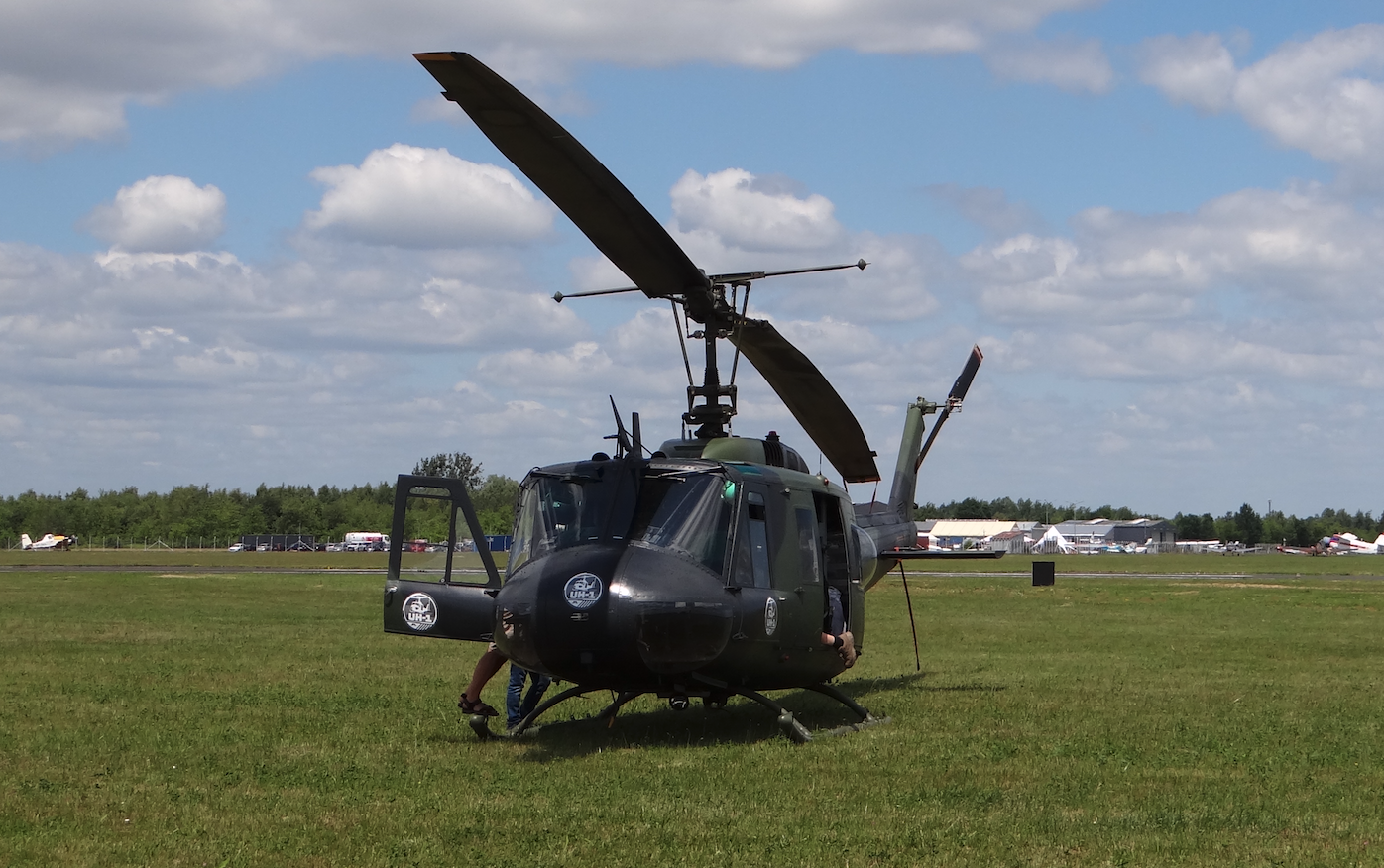Mielec 2025-06-28
Bell UH-1 Iroquois „Huey”.
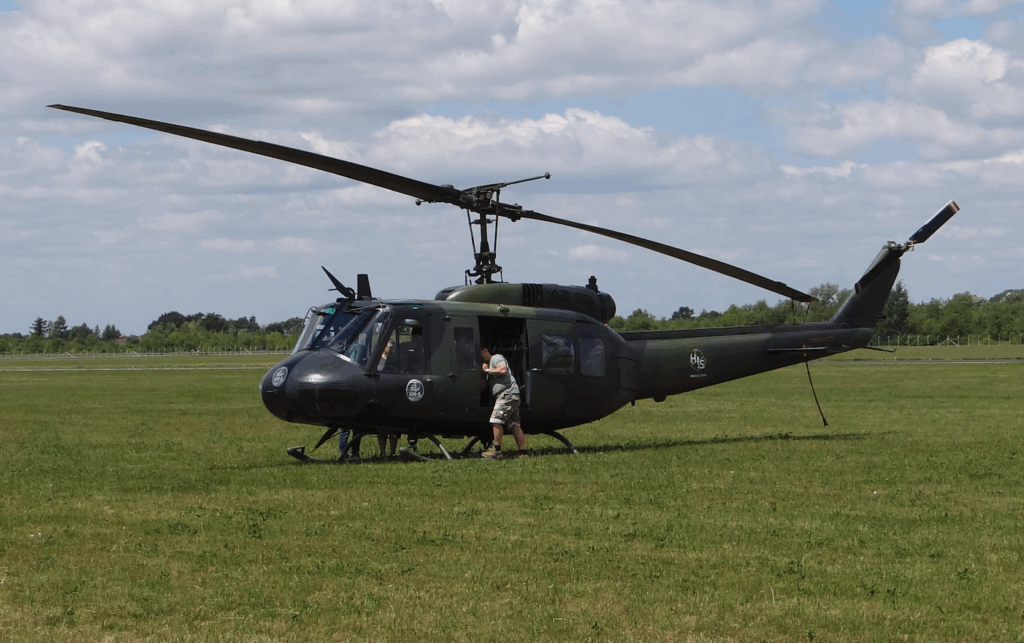
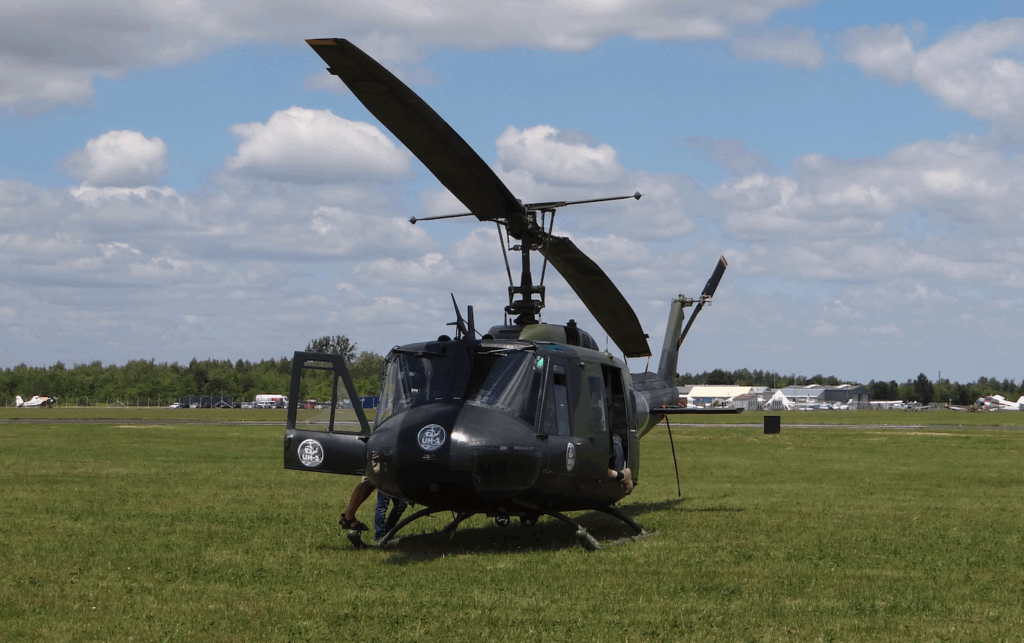
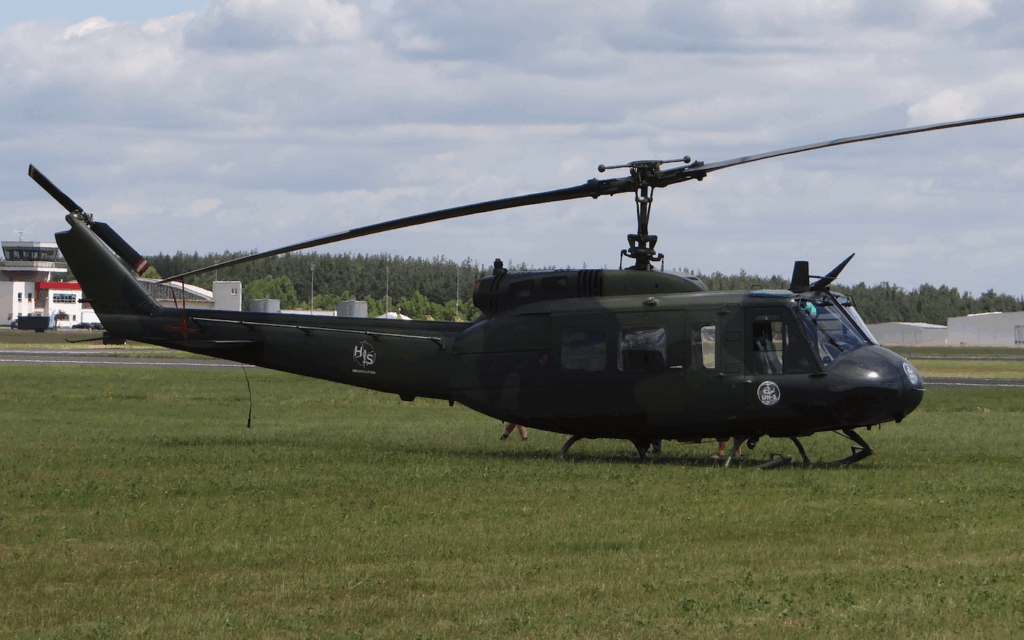
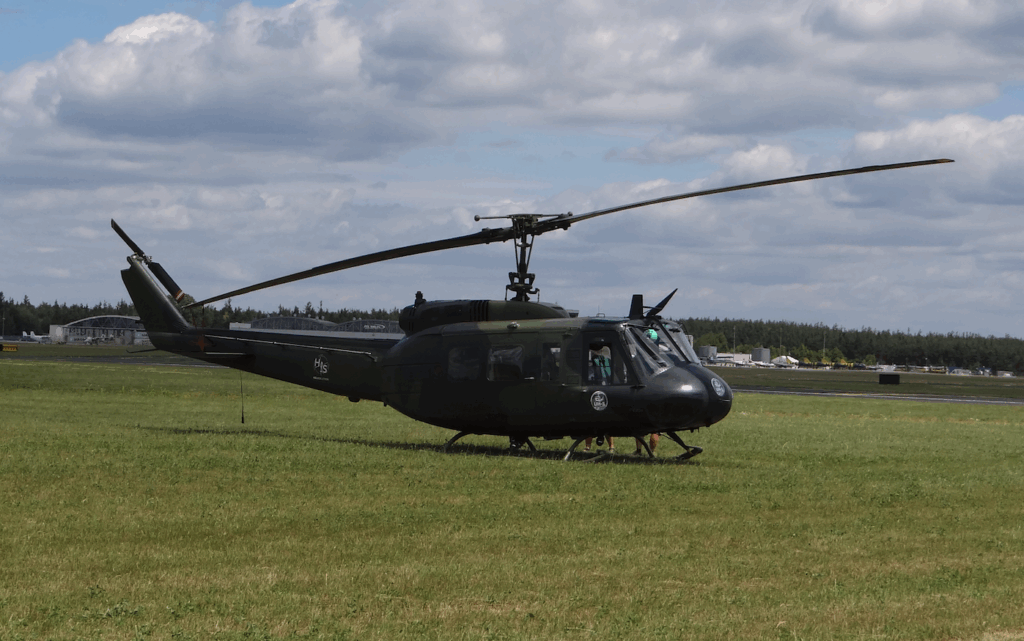
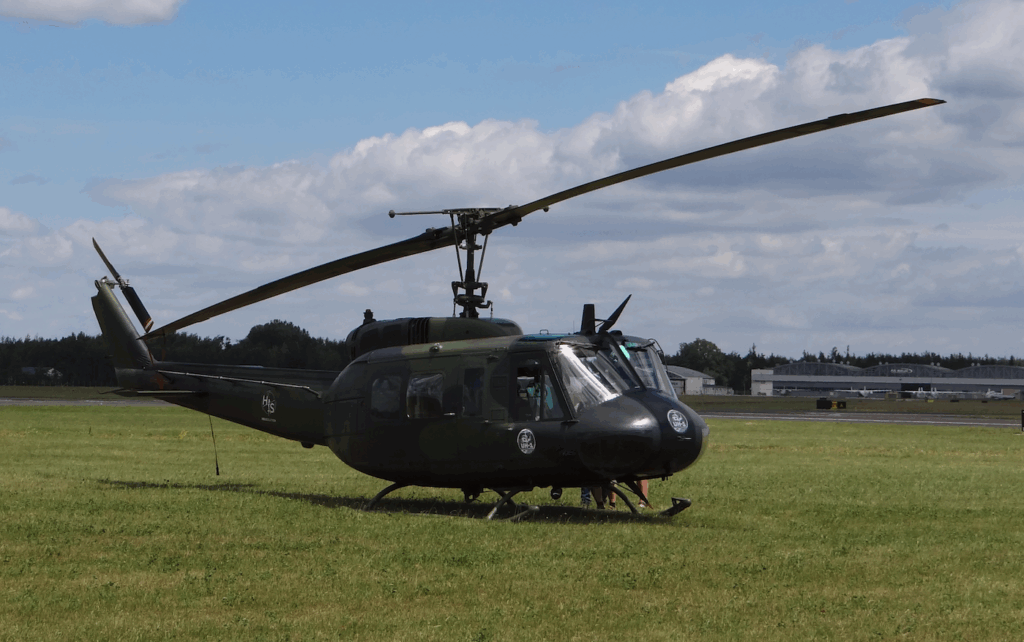
The Bell UH-1 Iroquois helicopter is known to the company as the “Huey”. It is one of the most iconic helicopters in history. Its common name “Huey” comes from the first designations HU-1, which were later changed to UH-1. The first flight was carried out on October 20, 1956. The machine was introduced into service in 1959. The main user was the US Army, but the application of the helicopter was also used in other 78 countries. Over 16,000 units were produced.
The Bell UH-1 helicopter is in a classic layout, with a skid-type landing gear. In the drive, then a two-blade main rotor with rear drive, the Hiller system, performing the function of stabilizing, and at the same time reducing the power on the control stick. This concept has proven to be good effects. The machine is very stately in hovering, and the piloting does not require additional extension to the pilot.
The Huey helicopter’s crew usually consists of two pilots, and can carry 14 soldiers or 6 wounded on stretchers. Depending on the version, the helicopter has one or two turbine engines. More than 20 variants of this powerplant have been created. Oldest versions of previous versions: UH-1A/B/C: Early versions of the combat and utility controller. UH-1D/H: Widely used for military transport, during the Vietnam War. UH-1N: Twin-engine variant used until the end of the 20th century.
Vietnam War.
The Huey helicopter became a symbol of the US involvement in Vietnam. It was used for: Troop transport. Medical evacuation (medevac). Close air support (gunship versions). It was called the “Angel of Mercy” by wounded soldiers because of its role in medevac missions. One air cavalry unit decided to add a psychological effect to its missions. They mounted loudspeakers on the “Huey” and played music before the attack. Most often, it was Richard Wagner’s “Ride of the Valkyries”. The effect was electrifying: the roar of the rotors, the roar of the engines, and the powerful classical music from the sky, worked both on the morale of their own soldiers and intimidated the enemy. Many Vietnamese soldiers believed that this was an “American devil from the sky” approaching. And the pilots themselves joked that this was “Operation DJ Huey”. This story inspired the famous scene in the movie “Apocalypse Now” (1979), in which Colonel Kilgore (played by Robert Duvall) conducts a helicopter attack to the sounds of the same Wagner music.
The most famous book about the UH-1 pilot, also published in Polish, is “Dispatches”. Author: Michael Herr. Original title: Dispatches. Polish edition: Rebis, 2005 (and subsequent). “Dispatches” is the most famous book-reportage about the Vietnam War, which also gives voice to the Huey helicopter pilots. But remember. After reading this book, you will be convinced that war is the worst thing on Earth, and all its participants who survived are traumatized for the rest of their lives.
If you are looking for a book written by a Huey helicopter pilot, then you should reach for: “Chickenhawk”, Author: Robert Mason, also published in Polish. This is the autobiography of a writer and pilot who completed over 1,000 combat missions. The author describes in detail what every element of the flight looked like, from takeoff to landing and evacuation. He does not hide his own mental breakdown after the war. This book is a classic and best captures what it was really like to sit at the controls of a Huey. It is in “Chickenhawk” that Robert Mason describes the scene in which the Huey crew plays a hit song from the speakers before a combat action: “These Boots Are Made for Walkin’” – Nancy Sinatra, from 1966, released on the album “Boots”. This was their war soundtrack, played just before the soldiers jumped out of the Huey into the jungle. It worked: as a form of psychological mobilization, as black humor (after all, the boots were supposed to “march” in Vietnam), as a way to tame fear. Excerpt from the book: “Nancy Sinatra came on the speakers. ‘These boots are made for walkin’…” – someone turned it up full blast. She flies over the jungle and suddenly we’re all ready to jump off. We agreed that if we were going to die, at least it would be with some good music in the background.”
Bell Helicopter Textron began work on the helicopter in 1955, under the factory designation Model 204. The US Army approved the helicopter for production. The first flight of the prototype, called the XH-40, was carried out on October 22, 1956. After a successful flight, several test series machines were built, later called the YH-40. After a series of tests and examinations, the helicopter was accepted into the US Army. The first series of helicopters, the UH-1A version (model 204) had an 860 hp engine and could accommodate 6 passengers. These machines were delivered to US Army units from June 30, 1959. The helicopter was produced in the period 1957–1986.
The drive consisted of one Lycoming T53-L-13 turbine engine, with a power of 1,044 kW. The main rotor diameter is 14.63 m. Length 17.40 m. Width of the fuselage 2.60 m. Height 4.40 m. Shipment weight 2,363 kg. Take-off weight 4,309 kg. Maximum speed 204 km/h. Practical range 4,300 m. Range 512 km.
Bell Helicopter Textron.
This is an American company that was founded in 1935. The company is headquartered in Fort Worth, Texas. Bell Helicopter is one of the leading manufacturers of commercial and military helicopters, and a subsidiary of Textron, Inc. It is a pioneer in the helicopter industry, which was established on June 10, 1935. The company, together with Boeing, designed an unusual aircraft, the V-22 Osprey. Bell is one of Sikorsky’s competitors in the global helicopter manufacturer market.
Huey in Poland. 2025.
In Poland, the Heli Solution Aviation Center purchased the iconic Bell UH-1 Iroquois Huey helicopter and established a new demonstration team called UH-1.pl. The helicopter’s premiere dynamic demonstration took place on June 20 and 21, 2025, during the Antidotum Airshow Leszno, and then on June 28 and 29, 2025, during the Mielec Air Show. The helicopter’s pilots are Mr. Maciej Dominiak and Mr. Dawid Walas. The UH-1.pl team plans to participate in Polish and foreign air shows. This is the first UH-1 show in Poland in many years. The team is permanently stationed in Poland. For the Heli Solution center, this is the second ex-military machine in the fleet after the Bölkow Bo-105.
Written by Karol Placha Hetman

